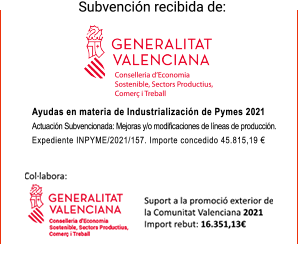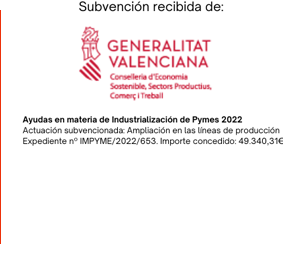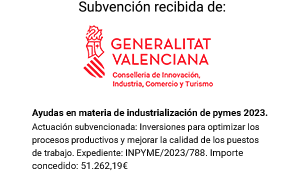¿Necesitas un lijado de precisión sin dañar superficies delicadas? Descubre las ventajas del disco de espuma estándar...
}Today there are a wide variety of abrasives for sanding metal on the market, so we must know them before choosing certain tools and processes. One of the most used options in the industry are coated abrasives, which are transformed into abrasive belts for use in stationary or stationary machines.
The options available in abrasive bands are multiple, and are the result of combining with each other:
One type of support: rigid, semi-flexible, flexible or non-woven fiber
With a type of mineral (suitable for sanding a certain metal): diamond, ceramic,
compact, zirconium, aluminum oxide or silicon carbide.Optionally, with an active agent to improve sanding: lubricating layer to reduce the
temperature or a layer of anti-seize stearate
Coated abrasives are one of the most used options in the industry for sanding metal, as
they have multiple options
How to choose the support, mineral and active agents for metal sanding
Depending on the type of operation we are going to perform, we can choose different combinations of materials:
Roughing operations: these require very rigid fabric supports with polyester, ceramic
minerals or zirconia, as well as the presence of a lubricating agent if the type of metal requires itIntermediate sanding operations: for these, rigid polyester fabric supports with cotton
or only cotton, zirconium minerals, aluminum oxide or a mixture of both are usually chosen.Finishing-polishing operations: they require semi-flexible fabric supports (polyester
with cotton) or flexible (only cotton), aluminum oxide or silicon carbide ores and the use of antifouling stearates if the type of metal requires it.
.png)
Professional sanding on metal surfaces: solutions by sector
The jobs in the metal sector where abrasive bands are most used are: in the sanding of pipes
and profiles due to the great demand in industry and construction, in the sanding and
polishing of metal parts for the automotive industry due to the wide number of companies
engaged in these jobs and the manufacture of knives and cutting tools, as it is the main tool
used for sharpening and finishing the blades.
However, there are more operations where such solutions are consumed. These are some of
them and the bands used in each case:
Metal polishing in general: abrasive bands of flexible or very flexible fabric are usually
used, with aluminum oxide and silicon carbide minerals for subsequent polishing.Stainless tanks: abrasive strips of rigid polyester fabric with ceramic ore and zirconium
ore. Abrasive bands of non-woven fiber with aluminum oxide minerals are also used, as well as abrasive bands of rigid or flexible fabric with micro-replicated pyramidal aluminum oxide minerals.The industrial activities where abrasive bands are most used in the metal sector are: industry and construction, automotive and manufacturing of knives and cutting tools
Foundries: it is common to use abrasive strips of rigid polyester fabric with ceramic ore
and zirconium ore.Surgical material: abrasive bands of flexible or very flexible fabric with aluminum oxide
ore and active agentsMachinery: abrasive strips of rigid fabric with zirconium ore and aluminum oxide are used.

Aspects to consider when buying a metal abrasive belt
To choose the right abrasive bands for sanding metal we need to know:
The dimensions of the abrasive tape: width x length
The type of support we need for the operation we want to perform.
The most appropriate type of mineral for the material we want to sand.
If we need the abrasive to incorporate a cooling agent that helps us to reduce the high
working temperature to avoid staining or discoloration of the surface.
If we need the abrasive to incorporate an antioxidant agent that helps us reduce the oxidation effect of some materials during sanding
To choose the appropriate abrasive belt we need to know: dimensions of the belt, type of support and mineral, grain size and if we need any extra agent
Tips for sanding metals
There are some basic tips when sanding any type of metal, which will determine the quality of
the result:
1. Know the properties of the material to be sanded: its hardness, toughness, and how high
temperatures affect it or not if this variable were present in the sanding operation.
2. Choose the most suitable belt support for the sanding operation that you want to perform.
3. Choose the appropriate abrasive mineral based on the type of metal and its properties.
4. Carry out an adequate grading of grains taking into account the initial state of the piece.
5. Perform the sanding operation with the appropriate speed and working pressure.
In addition, basic safety measures must be taken into account, such as the use of safety glasses, the use of a nasal mask to safeguard the airways of chips and detached particles, the use of gloves and protective apron, to avoid cuts and burns.
Why Abracom
Abracom is a manufacturer highly specialized in the production of abrasive belts for the metal industry. We have the specific abrasive for each material and sanding operation. We supply high quality abrasives from leading and expert brands. We have new, very fast and flexible machinery and a close and decisive team of professionals.
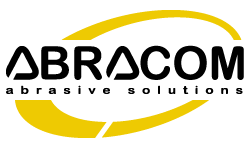





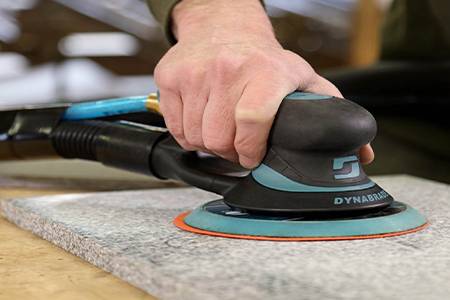
 (1).png)
















 (1).png)
.png)
.png)
.png)

.png)
.png)
.png)
.png)
.png)
.png)
.png)
.png)
.png)
.png)
.png)
.png)
.png)


